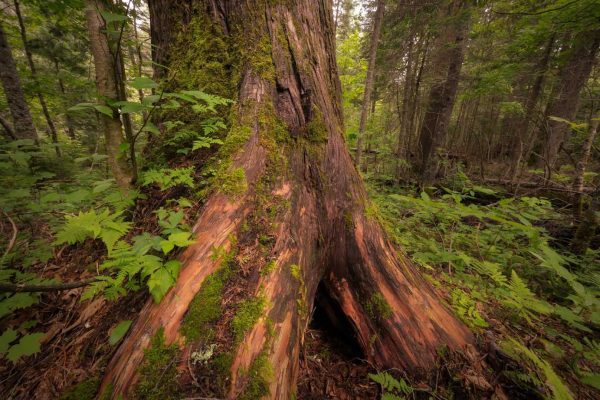The legendary Maine North Woods is the largest remaining undeveloped forest in the eastern US. The character of this treasured 10.4-million acre region is at risk of being lost forever, as changes in ownership have brought unprecedented pressures – from development to heavy logging. Acre by acre, from small subdivisions to expanded access at the Allagash Wilderness Waterway to massive proposals like Irving's proposed development around the Fish River Chain of Lakes, the remote nature of this region is being eroded. In 2019, the Land Use Planning Commission (LUPC) overhauled the adjacency principle, a policy it had used to guide responsible development and protect wildlife habitat in its jurisdiction for more than 45 years. NRCM fights to protect this region by looking at the North Maine Woods as a whole and helping to balance development and natural resource protection.
Maine's North Woods makes up almost half of the entire state. The landscape of the region is rapidly changing and its future is uncertain, largely because many paper companies have sold their land to private investors, real estate developers, and pension funds.
Paper companies now own only about 15% of the Maine North Woods; investors, including real estate companies (REITs), timber investment management organizations (TIMOs), and developers, own more than half of the forest. These investors may have no connection to the state of Maine and most do not plan to own the land longer than eight to twelve years.
These major changes in land ownership have created challenges and opportunities.
One result of these sales has been an increase in conservation lands. Most of this increase is in conservation easements that have been purchased using public funds and charitable contributions. These easements remove development rights but leave ownership of the land in private hands. The state and private non-profit conservation groups have also purchased some conservation lands outright, and now own them.
Despite this progress, random, often misguided development is still occurring throughout the North Woods. Since the establishment of the Land Use Regulation Commission in 1971 (now LUPC), two-thirds of development in the Maine North Woods has occurred without any review of its location, allowing “rural sprawl” to reach into the most remote sections of the North Woods. Real estate pressure also continues to mount in part because of the increase in remote work opportunities, Maine's relatively affordable cost of living, and climate migration.
Development sprawl throughout the North Woods has serious impacts on wildlife habitat, recreation opportunities, and the future of the forest products and nature-based tourism industries. Smart, well-planned growth, on the other hand, can help prevent haphazard, sprawling development while strengthening towns and rural industries.
Maine’s North Woods are a significant part of Maine’s heritage, cultural identity, and economic livelihood. Now is the time to look at the entire North Woods and help chart a course for the future.
Banner photo: Shoreline of Square Lake in Square Lake Township, Aroostook County. Photo by J.Monkman/NRCM











